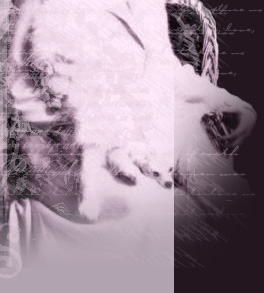

:: Rus - Where Our Story Begins ::
Yet as history tells, by the late 16th century the Imperial Family was about to see its sunset. On the throne sat the formidable Tsar Ivan, the legendary Ivan the Terrible. The name though, proceeds his time... for he was brought up in an era of brutality where torturous devices were commonplace all over Europe and Asia. In western Europe his royal counterparts were: Elizabeth I of England, Philip II of Spain, and Cesare Borgia in Italy. Like these Sovereigns, Ivan sought to curb choas and disorder with violence and fear. Today we look back at the deeds of these Sovereigns and think them inhumane, but for the time - no one doubted their power.
It was said that on the day of Ivan's birth the entire country rumbled with "the noise of thunder, and with awful flashes of lightning." Quick to strike like the lightning that serenated his birth, the five decades of his reign saw changes as defeaning as the thunder. His father, Vasilli III, had died when Ivan was just three years old, and only five years later his mother followed Tsar Vasilli to the grave. Years later a huge fire in Moscow presided over his coronation, along with rioting in the streets. By the time he fully took the reins of the government that year, 1547, he had learned who to trust and began to uncover who his enemies were after a confusing childhood. His idea of ruling was set like stone in the purpose of autocracy.
At all times, a Tsar must be... sometimes gentle and sometimes cruel, merciful to the good and cruel towards those who are evil. And if this is not the case, then he is not a Tsar.
~Tsar Ivan the Terrible~
The boyar was a constant source of trouble for the Tsar, and they refused to pledge allegience to his heir, making the security of his family's throne unstable. Repsonding to the growing threats of his power, Ivan struck out against the aristocracy. Anyone suspected of disloyalty suffered a terrible wrath.
When Ivan died in 1584 he left Rus in the care of his second son, Feodor Ivanovich. Tsar Feodor produced no heirs of his own in the four years of his reign, and with his death Rus tumbled into a panicked state of distress called the Times of Trouble.
Rumours had been surfacing that Tsar Ivan's third and youngest son, Dimitri, had survived a "fabled" death in 1591. Such stories of miracles and fabled surivals have long been a part of Imperial Russian history. As Tsar Boris was falling from grace a young figure claimed to be this long lost son. In reality his name was Grigory Otrepiev, commonly known as "The False Dimitri." In October 1604 he invaded and sought to take over Russia by force. His band was small, made up of Polish supporters and some Cossacks, yet he was surprisingly favored. The Russian people saw the "Tsarevich" as a savior coming to rescue them from the horrid conditions they lived in. When Tsar Boris died in 1605 "Dimitri" made his timely entry in Moscow and was proclaimed the rightful Tsar.
His successor was by the name of Vasilli Shuiskii, a man whose lineage was on his side but his reign lacked any divine favour. Numerous pretenders were appearing to the throne, the Polish were invading from the west and the Swedish marching from the north. In a further state of disorder, Vasilly was deposed in 1610 by the Assembly of the Land and lived the rest of his life as a monk.
In the deepest state of panic the state had ever seen, new fervor was put into the cause of finding Russia's savior. Prince Dimitri Pozharskii, along with the Patriarch of Moscow, and Kuzma Minin (a citizen of Nizhnii-Novgorod) stood at the head of the anti-Pole movement struggling against religious oppression. They dreamed of finding a Tsar who would right all wrongs, and piece the Empire back together. It was their dream that lead Russia out of these days of pure peril, their army that defeated the Polish in November of 1612, and their patriotic fever that restored Moscow back to its rightful owners.
Without a Sovereign we will not survive for long, for there is no one to care for the realm and no one to provide for God's servants..
~Prince Dimitri Pozharskii~
And so this is how, in the midst of a Russian winter, the Romanovs stepped to the Head of the Kingdom and picked up the reins to the Empire, beginning one of the most glorious times in all of Russia's history. This Dynasty crested three centuries, seeing with it a powerful line of Sovereigns adding to the Kingdom's glory and borders. Among Mikhail Feodorovich's successors were Peter the Great, the Empresses Anna and Elizabeth, Catherine the Great, her son Pavel Petrovich... and over the last full century of the Romanov's reign: the three Emperors Alexander, and the two Nikolai's.
~ Anna Thompson